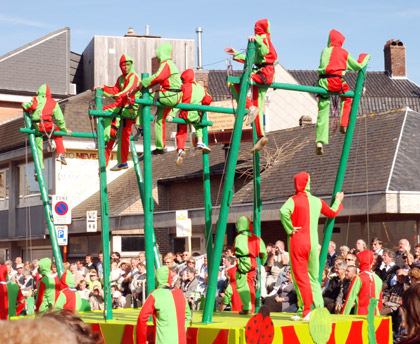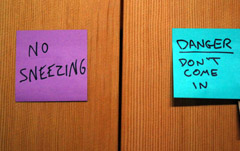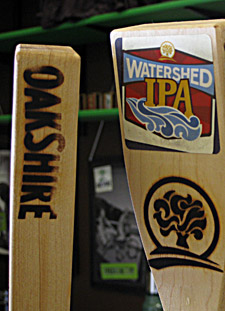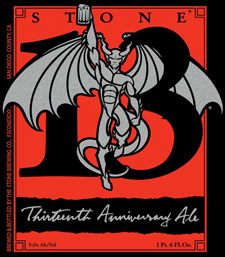 This is my contribution to The Session #29 hosted by Gail and Steve from Beer by BART. The theme is “Will Travel for Beer.” Visit them for the recap of what others have to write on this topic.
This is my contribution to The Session #29 hosted by Gail and Steve from Beer by BART. The theme is “Will Travel for Beer.” Visit them for the recap of what others have to write on this topic.
Our family loves travel — even in the years we don’t visit 49 states, 9 Canadian provinces and territories, and 15 countries in Europe — and think pretty highly of beer, but there a few times we travel for beer. Because we don’t have to. If a good beer experience isn’t always available right around the corner then it’s usually not too long a drive. This ain’t 1994. Thus my real advice to you is travel a lot, visit national parks, brake for good pie, and the beer will take care of itself.
But that’s a bit short for a Session post, isn’t it? So here are five destinations to consider if you intend to combine travel and beer.
1. Neuhaus in a bit of northern Bavaria known as the Oberfplaz on German Reunification Day, the only day of the year all the Zoigl breweries in town serve their beer. By chance I wrote about this for Session #20.
2. Poperinge in the West Flanders region of Belgium for its Hop Festival, held on the third Sunday of September every three years (next one in 2011). This is not a beer festival (though an afternoon of Poperings Hommel Bier works fine), but you can go beer hunting the rest of your time in Belgium. So get there early to visit the hops museum, then find a place to enjoy the parade.

Residents from throughout the region, and as far away at Germany, dress up to participate the lengthy celebration that weaves through the town. Including a stunning number of children, such as those in the photo above, many in hop costumes.
3. The English countryside, on foot, “rambling” from town to town, sleeping, eating and drinking in pubs. We did this in 1994 and really need to go back.
4. Pelican Pub & Brewery in Pacific City, Oregon. The most beautiful setting for a brewpub in America. Great beer and food almost seems like a lucky bonus.
5. The National Homebrewers Conference. The June 2010 gathering will be in Minneapolis-St. Paul (the public parks capital of the world). Greg Noonan of Vermont Pub & Brewery said this back in 1998, but it remains true:
“When the homebrewers stop entering the profession, and the backyard breweries are squeezed out, then it will become stagnant. You gotta keep getting the guys who say, ‘Cool, I can sell the beer I make. I can do it.’ ”
The NHC is one look at the future of American beer. You don’t need to be a homebrewer to appreciate the week. Top-flight commercial brewers will be there to share secrets and serve beer.
 This is not to say every beer was great, but Oregon’s been leading the nation since the mid-90s and somehow there’s still more local beer than there was not long ago, better and a wider variety, with more people drinking this beer in more places. Having visited forty-six states since we left home thirteen months ago I feel pretty confident typing there is no other like Oregon. And although I’m not sure why this makes sense to me, and appreciate it might not to you, leaving Oregon the other day made me stop to appreciate what I’ve seen elsewhere. I wouldn’t say other states are catching up so much as they are in hot pursuit.
This is not to say every beer was great, but Oregon’s been leading the nation since the mid-90s and somehow there’s still more local beer than there was not long ago, better and a wider variety, with more people drinking this beer in more places. Having visited forty-six states since we left home thirteen months ago I feel pretty confident typing there is no other like Oregon. And although I’m not sure why this makes sense to me, and appreciate it might not to you, leaving Oregon the other day made me stop to appreciate what I’ve seen elsewhere. I wouldn’t say other states are catching up so much as they are in hot pursuit. Matt Van Wyk at
Matt Van Wyk at  Turn up the volume another notch or two from big-ass and you have Stone 13. That was the impression out of the tank when I tasted it, before it was dry-hopped for the second time. For the record Stone calls this a 90-plus IBU beer, but the first batch in the bottle measured dead-on one hundred. The lads in the brewery added four and a half pounds of hops per barrel, more than any Stone beer ever.
Turn up the volume another notch or two from big-ass and you have Stone 13. That was the impression out of the tank when I tasted it, before it was dry-hopped for the second time. For the record Stone calls this a 90-plus IBU beer, but the first batch in the bottle measured dead-on one hundred. The lads in the brewery added four and a half pounds of hops per barrel, more than any Stone beer ever.